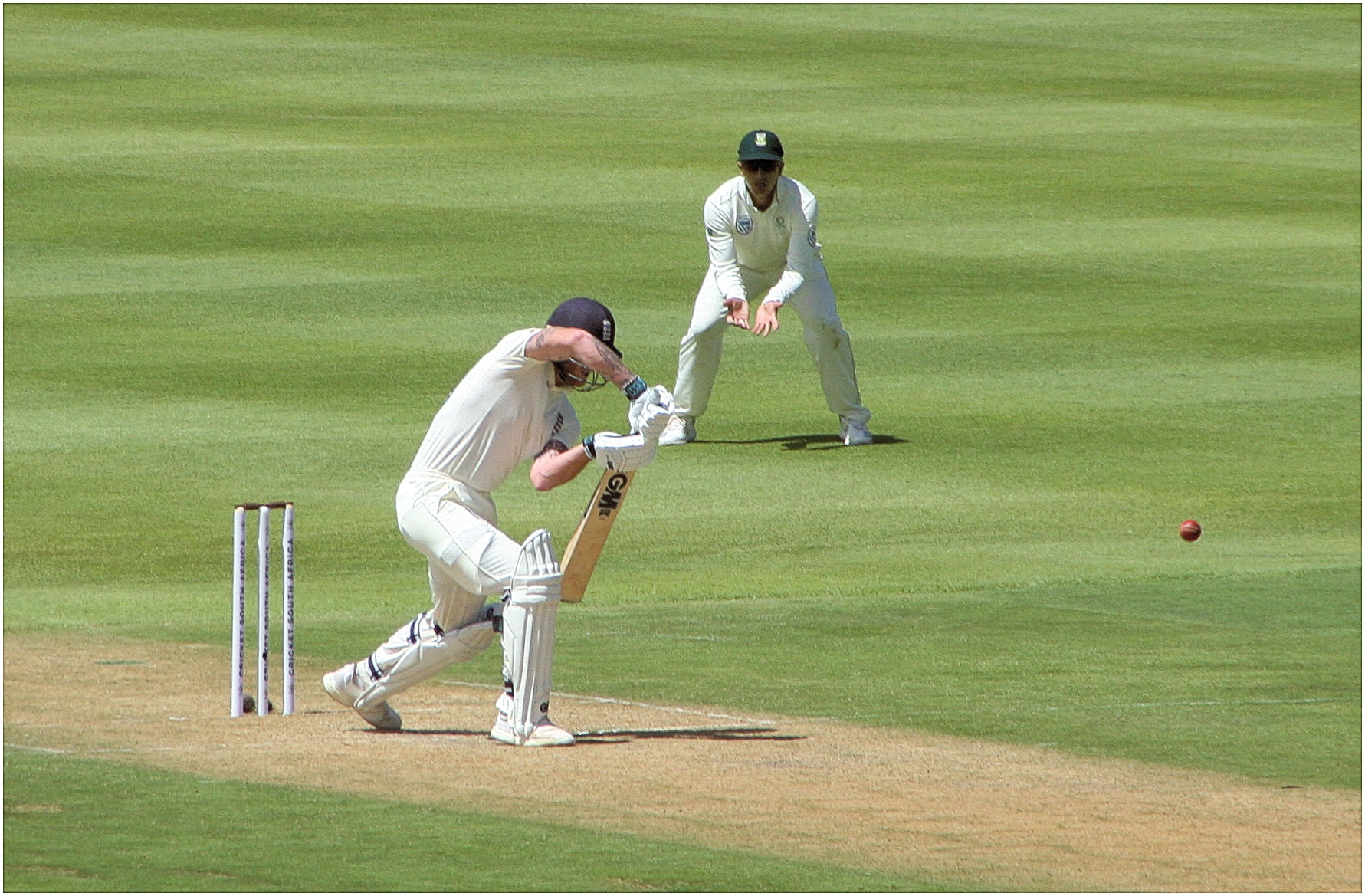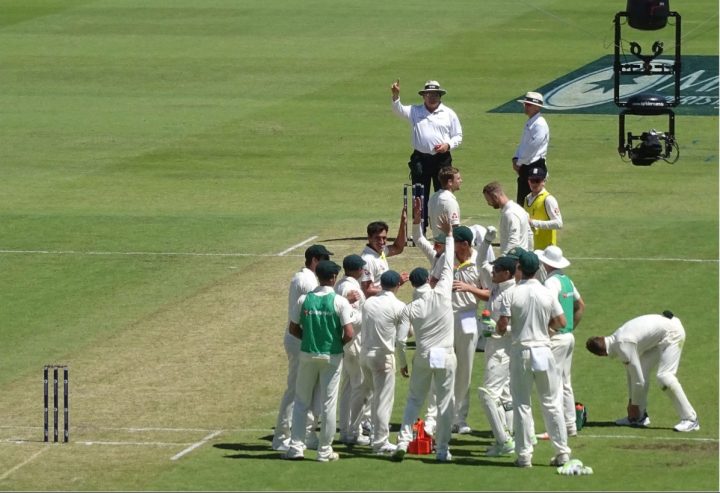Today we welcome new writer Steve Baggaley to TFT. He has some strong views on what white ball cricket is doing to the traditional skills of the game. Anyone who’s watched England’s Test team bat in recent times will appreciate exactly where he’s coming from…
Poor batsmanship is threatening the true nature of the game of test cricket – and the game’s shorter formats are not helping.
At its most exciting, cricket is not only a celebration of the various skills of the players: the swing, seam, and spin of bowlers; and the back foot, front foot, soft hands, and hard hands of batsmen. It is also critically reliant on testing these skills in a variety of conditions, over five days: climate and humidity, outfield and dew, ball and shine, pitch and soil. This combination of factors creates the endlessly fascinating nuances of the sport.
When these conditions become challenging, today’s batsmen are all too often flailing and failing. Given a grassy green wicket or raging turner, batsmen do not then have the skill to defend or attack against the moving ball. The feet go nowhere, the head is off kilter, balance is lost, and wickets tumble. Matches last three days (sometimes less), and most significantly, cricket boards lose money.
Quality batting gives curators the confidence to prepare cricket pitches that promote the skills of the game. The swing and seam of a fast bowler on the first morning, the guile and field placements needed as the pitch flattens and dries on day two and three, and the challenge of spin on day four and five showcase the game’s demands. Batsmen must adapt to the swinging and seaming ball through swift footwork. Focus and concentration are key when the pitch loses life. Attack and defence are paramount when facing the turning ball.
Time allocated to test cricket is key. Time for the pitch to change in color and character: green tinged on the first day, and grey, scuffed, and cracked on the last. Time for the ball to be polished, scuffed (legally we hope), and seam flattened. All these factors influence the aerodynamics and movement of the ball. The game is nuanced, testing a range of skills that other shorter formats of the game forego.
The shorter formats of the game have aggravated batsmen’s deficiencies. After all, the fewer the variables, the more homogenised the product – pitches so true as if made of glass, batsmen blasting the ball to all quarters, bowlers attaining no movement; resorting to circus tricks including knuckle balls and fast leg-spinners: at best, entertainment for a new generation of follower; at worst, dumbing down the sport to a series of cheap thrills for short attention spans.
This immediate form of gratification should not surprise in today’s world of texts and tweets. Communicating over distance used to be a process of writing, sending, receiving, and responding – all on paper – creating a sense of anticipation. This is analogous to test cricket over 5 days. How much grass is on the pitch? Will the field rough up the ball for reverse swing? How far will the cracks open up? There is a sense of time and space in which the mind can slow down and analyse.
Of course there are many constraints to this ideal. The very popularity of T20 and its predecessor, 50-over cricket, are predicated on the family friendly entertainment of explosive strokes of the batsmen, providing the instant gratification of fours being smashed and sixes clubbed. After all, this is a game for spoilt batsmen playing outlandish shots with the confidence that the bounce of the ball is true. Sure, paddles over keepers and baseball slugs over ropes have their own challenges, but this bears little resemblance to the fundamentals of the game.
More money and marketing needs to support the longer form of the game. Recognising and promoting cricket as a game played in a variety of conditions will motivate coaches and players to teach skillsets that are the very essence of cricket. Better quality batting will give curators more confidence to prepare the ideal pitch which seams, flattens, and then spins. Matches will last longer, benefiting both crowds and administrators while promoting the skills of the game.
Or we can continue down this same lifeless flat road, watching tens of short-form matches that all meld into one another, watching batmen’s techniques deteriorate, and ignoring the true essence of cricket: a test of time, space, and the ever-changing conditions.
Steve Baggaley









One thing that jumps out at me here, Steve, is the number of references to the true essence of cricket, the very essence of cricket, the fumdamental skills–by which you mean red-ball skills.
I’m middle-aged–and maybe partly as a consequence of that (but not exclusively: I’m pretty sure there are middle-aged people who think that red-ball cricket is as interesting as watching paint dry and that T20 is just the ticket) I would like nothing more than to see a resurgence of red-ball cricket.
But imagine I’m one of those sceptics–or maybe one of those YouTube-clip-loving teenagers who you seem to be gently patronising in this piece. WHY is red-ball the essence of the game, and its skills the “fundamentals” of the game in a way that knuckle balls and ramp shots aren’t? (And I mean essence, rather than just the way it’s been done for a long time: after all, the googly was the circus trick of its day).
Because even T20 lasts twice as long as the average sports match in most other sports–and the only sports I can think of which have longer matches than T20 are snooker (which is a very different kind of activity) and golf (which is a very different kind of spectator experience).
I suspect that one of your answers may be sublety. But then–why is subtlety the essence of something in a way that instant gratification isn’t? I’m trying not to do this only as a way of playing devil’s advocate but because I think blogs full of often middle-aged, often white men sometimes assume that what we consider the essence of cricket is its essence in some objective way. Which as a strategy has the huge problem that it’s preaching to the converted–and all the while much red-ball cricket is not attracting very many spectators and especially isn’t attracting very many young spectators. So how are we going to (or is it possible to) convince the sceptics, especially in the T20 crowds and in the dressing-rooms, without just convincing them that we’re a load of doddery old farts?
It’s more about mentality than technique I think. Graeme Smith and Alastair Cook (to name but two) had dubious techniques but made thousands of Test runs through their mentalities.
The combo of juiced-up pitches and batsmen not able/willing to grind it out has been a perfect storm of shite cricket. Most boards want four-day Tests so aren’t going to be concerned in the slightest. BTW, juiced-up pitches isn’t a “conspiracy theory”, it’s declared ICC policy (supposedly to compensate bowlers for the indignities white-ball roads inflict on them).
Oh, and for the previous writer there are many other sports that last longer than a T20 game – how long is a 5-set tennis match for example? I would sort of agree that defending red-ball cricket as the essence of the game is a mistake. I’d argue instead it’s the superior form of the game and cite that just about every major player who’s played the game thinks so too. The problem isn’t that white-ball cricket doesn’t have a place – it’s that those running the game don’t see it as a gateway into the longer form but as an end in itself.
On the length of game point Simon–what are your other examples of longer sports, out of interest? I really couldn’t think of any others than the ones I quoted–and a five-set tennis match would be three-and-a-half/four hours wouldn’t it?…which is about the same length as a T20 game.
In passing–where and when did the ICC say that their official policy was to spice up pitches (is anyone suggesting that it IS a conspiracy theory, btw?) I haven’t seen it reported anywhere I don’t think–and everything that I can remember the ICC saying rather suggests that they think the opposite.
“Oh, and for the previous writer there are many other sports that last longer than a T20 game – how long is a 5-set tennis match for example?”
Exactly. Marathon running, Rowing, Long distance swimming… Try 17hrs and 14 minutes swimming the Channel (in my more youthful past!)
I’m sceptical. The winning times in professional marathon running are well under three hours and occasionally under two–and that will be the crucial point in watching it, not who comes 74th. Rowing–all the records I could find are measured in minutes rather than hours–even the Boston Marathon, which seems to be one of the longest races, has a winning time of around three hours. (And having checked the world-reocrd times and numbers of games, as far as I can see there have been four Wimbledon finals in history that you couldn’t fit into an IPL match).
Ultra long distance swimming–sure, but cross-Channel swimming isn’t a spectator sport. I’m not trying to say that there aren’t any, but as a spectator experience there are few, and almost all of them seem to be (a stage in the Tour de France or similar now comes to my mind too) a somewhat different kind of experience in that you don’t see the whole of the action.
So in terms of spectator experience in a time-poor society, I’m not sure there’s any relevance in, say, cross-Channel swimming or long-distance rally driving
Not getting update messages and can’t always see my posts?
If in doubt please refresh the page. Usually does the trick.
No doesn’t work on my desktop or Fire. Usually all comes up after 2 to 3 days.
Don’t know if it’s the same issue, but the only thing that works for me is clearing my cache–and I have to do it every single time I come on to be sure that I can see every post.
Sometimes I lose the whole topic. It disappears and then magically returns a couple of days later. Clearing the cache makes no difference. It’s a pity because I can’t always follow the threads.